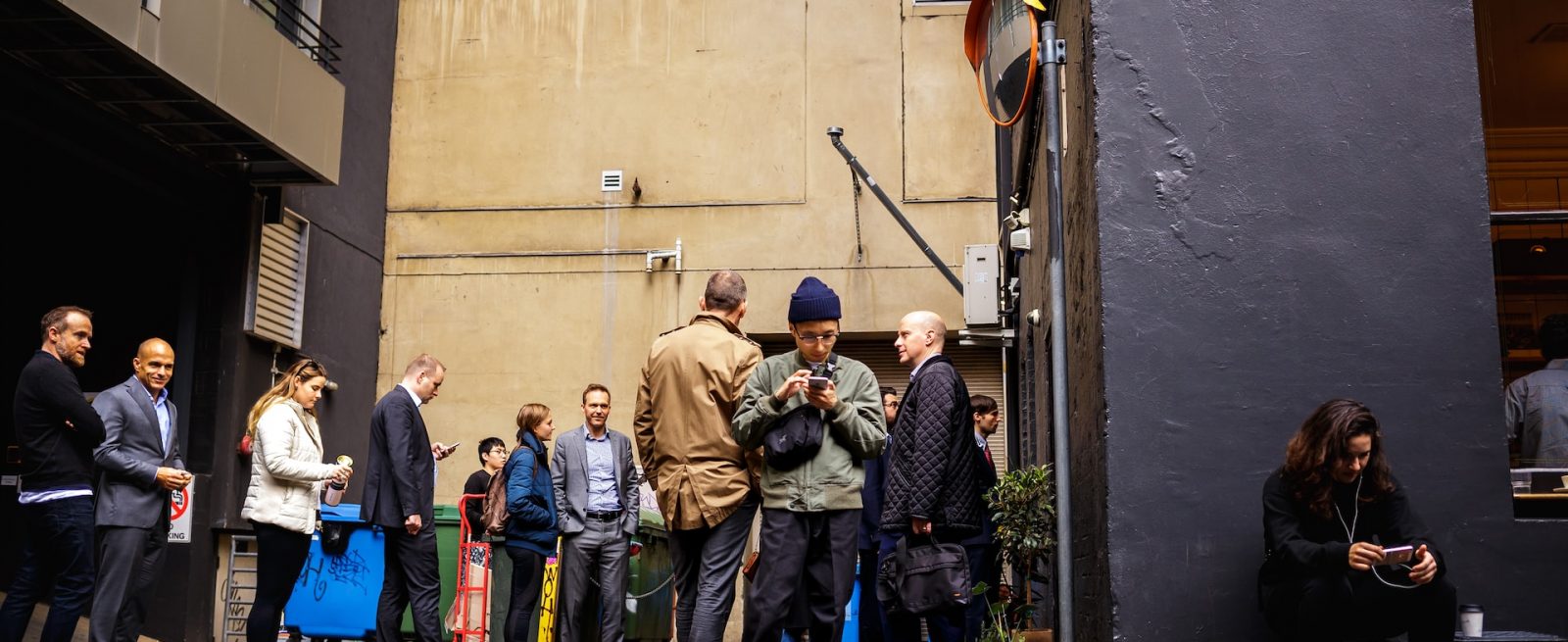Why Setting Wait Time Expectations Is Key to a Good Customer Experience
4 Min Read By Yoni Lavi
Not much sours a customer’s perception of a restaurant as fast as unwieldy lines and long waits. Especially for fast-paced establishments, managing wait time expectations is a significant challenge and can cause patrons to leave — or, worse, never return. Although management can’t always eliminate the wait for service entirely, they can use modern technology to set reliable wait time expectations from the start.
First of all, setting such a standard gives the initial perception to visitors that you're savvy — your staff knows what’s going on and what to expect. As a result, the potential customer who just walked in also knows what to expect, automatically putting them at ease. In other words, the effort of providing a wait time expectation conveys a level of professionalism and awareness that patrons generally appreciate.
The Importance of Perceived Wait Time
Especially for perpetually busy or high-demand restaurants, customers who have to wait a long time can still be satisfied. However, customers who think that they’ve waited too long or perceive that the wait isn’t worth the service are almost never satisfied.
A study by the American Customer Satisfaction Index (ACSI) found that wait time duration is one of the top drivers of customer satisfaction. Those who are forced to wait longer than expected are 18 percent less satisfied with their experience overall. Needless to say, every establishment should aim for fully satisfied patrons, and that starts with providing realistic and transparent wait time expectations.
A 2020 study on the psychology of queuing states that consumers are consistently inaccurate at estimating how long they think they’ve been waiting for. This finding further complicates matters because even if the customer only waits, say, five minutes to receive service, they may feel that they’ve waited much longer, causing frustration and distrust. Access to accurate, live time estimates provides the visibility necessary to perceive the actual duration of time they waited, lessening the chances of dissatisfaction. With a virtual queuing system, notifications can be sent directly to the customer’s device to inform them of status updates, including unexpected reservation changes or the amount of time remaining until they’ll be seated.
Engaging Customers While They Wait
One solution for decreasing perceived wait time is to leverage queuing technology for continued guest engagement during their wait. A virtual queuing system has the ability to deliver promotions or other marketing materials directly to a captive audience: people already doom-scrolling on their devices or simply awaiting status updates. This effort transforms previously wasted downtime into productive interactions with your brand.
How Wait Time Expectations Enhance the Customer Experience
Using truthful, historical data regarding customer flow to set wait expectations works to elevate the customer experience in several ways. By offering much-needed transparency in the form of accurate wait time expectations and real-time updates straight to user devices, your restaurant can:
Reduce Patron Anxiety
Perhaps most importantly, sharing regularly updated information about expected wait time reduces anxiety among those waiting and subsequently empowers customers. Reasonably, not knowing how long something is going to take causes unease for waiting patrons. The ability to deliver a reasonable estimation right when they arrive and update it throughout their wait provides a level of comfort that wouldn’t exist otherwise. The presence of this objective data minimizes the guessing that may be causing patrons needless angst.
And because sometimes things change, modern virtual queuing software allows for important alerts and notifications to be sent directly to the patron’s device in the event of unexpected changes. Businesses can even communicate directly with the patron through text, email, or live chat if necessary to keep them informed of other necessary status updates.
Encourage Retention and Return Guests
Furthermore, proper execution of this practice can reduce line abandonment and increase overall customer loyalty. In general, a consistently positive experience is key to retaining customers. When a restaurant shows its patrons that it values their time by offering insight into how long they will have to wait, it gives them the decision-making power they crave. By allowing them to simultaneously manage other daily tasks while they wait, for example, the restaurant clearly prioritizes customer convenience and productivity.
Although this level of customer care certainly helps encourage patrons to stay in the queue, digital technology also offers an additional method of retention in the form of wait-screen offers, which work to keep customers occupied during their wait. Virtual queuing technology’s branded messaging capabilities continue to engage patrons while they wait via direct communications like videos, form fills, vouchers, and more.
Improve Service Quality
Additionally, providing accurate wait time estimates has a positive influence on the employee experience and thus workplace productivity, leading to better more efficient customer service. For one, staff members aren’t being constantly bombarded or interrupted with inquiries regarding their wait time (“Excuse me, how much longer is it going to be?”). This painfully common dialogue is unnecessary and no longer needs to exist when patrons are receiving regular updates and important business communications via their device.
Moreover, the data collected from virtual queuing software gives management the insights they need to adequately staff their restaurants and even distribute staff members across multiple locations. Being able to visualize and clearly understand where the demand is and how busy each location is at a given time means leadership can identify where resources should be allocated, further maximizing service quality.
Manage Perceived Wait Time with Accurate and Timely Data
Naturally, restaurant managers can’t completely eliminate the need for guests to wait for service. They can, however, use technology to collect data that reveals accurate and reliable wait time expectations based on credible analytics. Actively relaying this information to their customer base provides a level of visibility unmatched by most other satisfaction efforts. This results in consistently positive experiences for their guests, encouraging return visitors and building customer loyalty, which “stands as a proxy for profitability.”
To sum up, when restaurants don’t disclose realistic wait time expectations to their patrons, the resulting uncertainty inevitably threatens the business’s performance, professionalism, and productivity. The right queuing technology leverages historical data to communicate clear messages with objective honesty, reducing anxiety and improving the overall customer experience.


